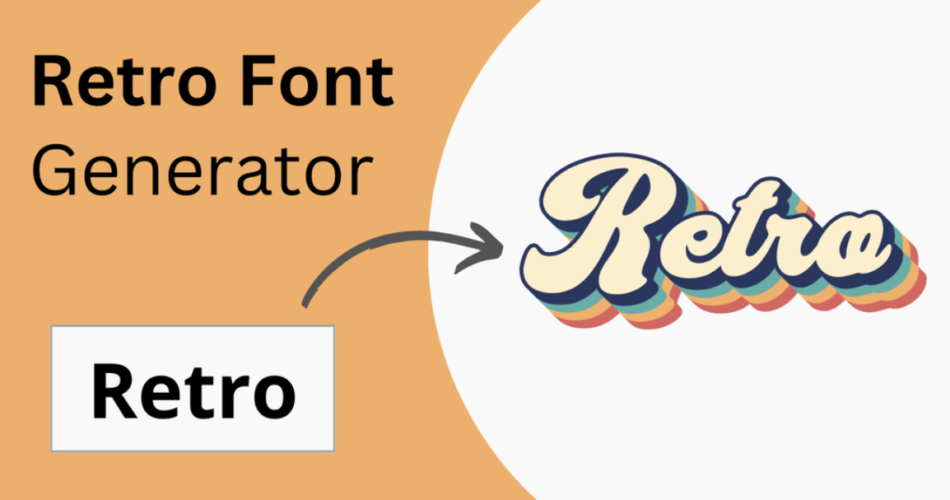Typography plays a crucial role in design, branding, and communication. Whether you’re designing a website, creating marketing materials, or crafting a personal project, the right font can make a significant impact. However, finding the perfect font isn’t always easy, and that’s where font generators come into play. In this article, we’ll explore what generators are, how they work, and how they can enhance your design projects.
What is a Font Generator?
A font generator is a tool or software that allows users to create custom fonts or text styles without the need for extensive graphic design skills or software. These generators are typically web-based and user-friendly, making them accessible to a wide range of people, from graphic designers to hobbyists.
Font generators can perform various functions, including:
- Font Creation: They enable users to design and customize fonts by altering attributes like letter shapes, spacing, and thickness.
- Text Styling: Generators can generate stylized text with various effects, such as 3D text, graffiti, or calligraphy.
- Previewing Fonts: Users can see how a particular text or phrase looks in different fonts before making a selection.
- Exporting and Downloading: Many generators allow users to export their creations as downloadable font files, images, or HTML/CSS code for use in various design projects.
- Accessibility: Some generators are designed with accessibility in mind, helping users create fonts that are easier to read for individuals with visual impairments.
How Font Generators Work
Font generators use algorithms and pre-designed typefaces as the foundation for creating new fonts or text styles. Here’s a simplified overview of how they typically work:
- User Input: The user enters their desired text, choosing a base font or style if needed. This text serves as the canvas for customization.
- Customization Options: Font generators provide various customization options depending on the tool. Users can adjust factors like font size, weight, style (italic, bold), letter spacing, and color.
- Algorithm Processing: The font generator’s algorithm processes the user’s input and customization choices to generate the desired font or text style.
- Preview: The user can preview their custom text in real-time to see how it looks with the chosen settings.
- Export: Once satisfied with the result, the user can export the generated text as a downloadable font file or as an image to use in their design projects.
Use Cases for Font Generators
Font generators are versatile tools that find applications in various design and creative projects:
- Logo Design: Designers can create unique typography for company logos or product branding, ensuring a distinctive and memorable identity.
- Social Media Graphics: Font generators are handy for crafting attention-grabbing text overlays on social media posts and images.
- Web Design: When web designers need custom fonts for websites, font generators provide a quick solution without the need for extensive coding or font licensing.
- Printed Materials: Brochures, flyers, posters, and other print materials can benefit from custom fonts that align with the project’s theme.
- Personal Projects: Individuals can use font generators for DIY invitations, greeting cards, or personal blogs to add a personal touch to their creations.
Advantages of Using Font Generators
- Accessibility: Font generators democratize font design by making it accessible to people with limited design experience.
- Time-Efficient: They offer a fast and efficient way to experiment with different fonts and styles, saving hours compared to manually designing fonts.
- Cost-Effective: Users can avoid purchasing expensive font licenses by creating custom fonts tailored to their needs.
- Creativity: Generators encourage creativity and experimentation, allowing users to explore unique and unconventional typography.
- Consistency: Designers can ensure font consistency across various design elements, maintaining a cohesive visual identity.
Limitations and Considerations
While font generators are powerful tools, they do have limitations:
- Limited Complexity: Complex and intricate font designs may require specialized software and expertise that generators cannot provide.
- Quality Variability: The quality of generated fonts can vary depending on the generator’s algorithms. Some may produce better results than others.
- Licensing: Be aware of font licensing restrictions when using custom fonts generated from commercial typefaces. Some fonts may not be suitable for commercial use.
- Browser Compatibility: If using web fonts generated by generators, ensure compatibility with different browsers and devices.
Conclusion
Font generators are versatile and user-friendly tools that empower designers and creators to experiment with typography in exciting ways. Whether you’re crafting a logo, designing a website, or adding a personal touch to a project, they offer a quick and accessible solution to your font customization needs. However, it’s essential to understand their limitations and consider factors like licensing and compatibility when incorporating custom fonts into your projects. With the right generator, you can unlock a world of creative possibilities and elevate your design work to new heights.

